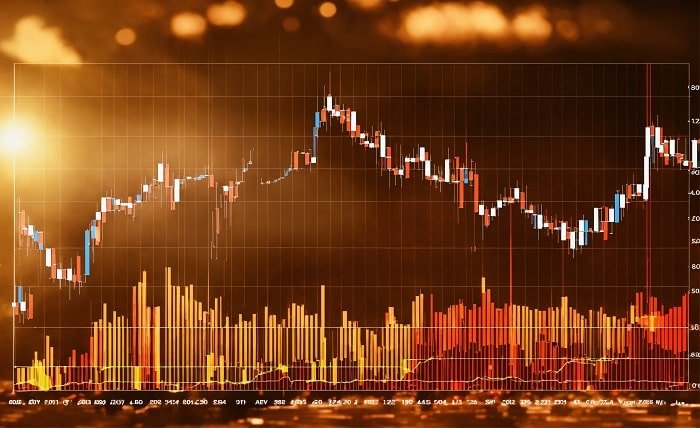Gold has always been a symbol of wealth, security, and stability throughout history. Over the years, its value has fluctuated, driven by a variety of factors such as economic conditions, geopolitical events, inflation, and market demand. The gold price trend is often scrutinized by investors, collectors, and even governments, as it serves as a barometer of economic health and a hedge against market volatility. In this blog post, we will take a deep dive into the gold price trend, analyzing its historical movements, the factors influencing its price, and what the future might hold for this precious metal.
Understanding the Gold Price Trend
The gold price trend refers to the general direction in which the price of gold moves over a specific period. Like any other commodity, gold prices can rise or fall based on numerous internal and external factors. Historically, gold has shown resilience in times of economic uncertainty, with many investors turning to it as a safe haven during market volatility. However, understanding the nuances of the gold price trend requires an analysis of both short-term fluctuations and long-term movements.For instance, in the 2000s, the price of gold began a significant upward trajectory, which continued until the early 2010s, peaking around $1,900 per ounce in 2011. This surge was largely driven by the global financial crisis, which heightened concerns about inflation and the stability of fiat currencies. Since then, the gold price trend has been influenced by factors such as changes in interest rates, inflation rates, and shifts in geopolitical dynamics.
Historical Trends in Gold Prices
To understand the current gold price trend, it’s important to look at its historical movements. The price of gold has seen many ups and downs over the years, often reacting to global economic and political events.One of the most significant periods in gold’s price history occurred in the 1970s, when the United States ended the gold standard. This led to a period of high inflation and a sharp rise in gold prices. The gold price trend during this time saw gold soar from around $35 per ounce in 1971 to over $800 per ounce by 1980. This spike was largely driven by inflationary pressures, rising oil prices, and geopolitical tensions.The price of gold experienced another surge in the early 2000s, starting around $300 per ounce in 2001 and reaching over $1,900 per ounce in 2011. This period was marked by global financial crises, which led to increased demand for gold as a safe haven.
Factors Influencing the Gold Price Trend
The gold price trend is influenced by a variety of factors, both global and local. Some of the key elements that drive changes in the price of gold include:
1. Inflation and Currency Devaluation
Inflation plays a critical role in shaping the gold price trend. When inflation rises, the purchasing power of paper currency declines. Investors often turn to gold as a store of value in such times, driving up demand and, consequently, the price. In times of high inflation, gold is often viewed as a hedge against losing wealth, which can push its price higher.
2. Interest Rates and Central Bank Policies
Interest rates set by central banks are another major factor influencing the gold price trend. When interest rates are low, the opportunity cost of holding gold (which doesn’t yield interest) decreases, making gold a more attractive investment. On the other hand, when interest rates rise, investors may shift their focus to assets that offer higher returns, such as bonds or equities, which can cause gold prices to fall.
3. Geopolitical Uncertainty
Geopolitical events, such as wars, conflicts, and political instability, can also influence the gold price trend. In times of uncertainty, investors often flock to gold as a safe haven. For example, during the 2008 financial crisis and the global trade tensions in 2019, the gold price surged due to concerns about economic stability and market volatility.
4. Supply and Demand Dynamics
Like any commodity, gold’s price is also influenced by supply and demand dynamics. The mining of gold, its availability in the market, and the demand for gold for industrial, jewelry, and investment purposes all play a role in shaping the gold price trend. Additionally, large-scale buying or selling by central banks or institutional investors can lead to significant shifts in gold prices.
5. Economic Growth and Stock Market Performance
Economic growth and stock market performance can either support or weaken the gold price trend. In times of strong economic growth, investors tend to shift their focus away from gold and into equities, which can drive gold prices down. Conversely, when economic growth slows or markets experience volatility, gold often rises as a safe haven asset.
The Impact of Global Economic Events on the Gold Price Trend
Gold is often considered a barometer of global economic health, with its price reflecting investor sentiment and market conditions. Major economic events, such as recessions, inflationary cycles, or global financial crises, have a direct impact on the gold price trend.The global financial crisis of 2007-2008, for example, caused gold prices to skyrocket, as investors sought refuge from the collapsing stock markets and the uncertainty surrounding the global economy. The gold price trend during this period was marked by a steady increase in value, peaking at $1,900 per ounce in 2011.Similarly, during times of political instability, such as the Brexit referendum in 2016, the gold price tends to rise as a result of investor uncertainty. Geopolitical events like the trade war between the U.S. and China have also led to fluctuations in the gold price trend, with gold seeing significant price hikes during periods of heightened tensions.
Analyzing the Future of the Gold Price Trend
Looking ahead, the future of the gold price trend remains uncertain, as it is influenced by numerous variables. Several factors, such as central bank policies, inflation rates, and the overall health of the global economy, will play a role in determining whether gold continues to rise or experiences a correction.One potential scenario is that gold could continue to rise in value if inflationary pressures persist and central banks maintain accommodative monetary policies. On the other hand, if global economies rebound strongly and interest rates rise, gold could face downward pressure.Additionally, technological advancements in the mining sector, changes in consumer behavior, and the rise of alternative investment vehicles such as cryptocurrencies could influence the long-term gold price trend.
How Investors Can Use the Gold Price Trend for Investment Strategies
For investors, understanding the gold price trend is crucial in making informed decisions. Gold can be a valuable addition to a diversified portfolio, especially during periods of economic uncertainty. However, it’s important for investors to recognize that gold’s price can be volatile, and its performance is influenced by many factors.To take advantage of the gold price trend, investors can either buy physical gold, such as bullion or coins, or invest in gold-related securities like exchange-traded funds (ETFs), mining stocks, or gold futures. Each investment vehicle offers different risks and rewards, so it’s important to carefully consider one’s financial goals and risk tolerance before making a decision.
Conclusion
The gold price trend is a dynamic reflection of various factors such as economic conditions, geopolitical events, inflation rates, and global market sentiment. Understanding these influences is key to forecasting potential price movements and making strategic investment decisions. While gold has traditionally been viewed as a safe haven asset, it remains susceptible to fluctuations based on external events and broader market forces.Investors interested in capitalizing on the gold price trend must stay informed about market developments and carefully monitor the factors that influence gold’s price. As with any investment, due diligence is essential, and diversification is key to reducing risk and ensuring long-term financial success.
FAQs
1. What drives the gold price trend?
The gold price trend is driven by several factors including inflation, interest rates, geopolitical instability, market demand, and economic conditions.
2. Is gold a safe investment?
Gold is often considered a safe haven during times of economic uncertainty, but its price can fluctuate due to various factors. It is a good hedge against inflation but not without risks.
3. How does inflation affect the gold price trend?
When inflation rises, the value of paper currencies decreases, which often leads to an increase in demand for gold as a store of value, causing gold prices to rise.
4. Can gold prices decline?
Yes, gold prices can decline due to rising interest rates, strong economic growth, or reduced demand. It is important to understand the market conditions influencing the gold price trend.
5. What is the outlook for gold prices in the future?
The future of the gold price trend depends on various factors including global economic conditions, inflation rates, and investor sentiment. Predictions are speculative, but gold is expected to remain a key asset in times of uncertainty.





